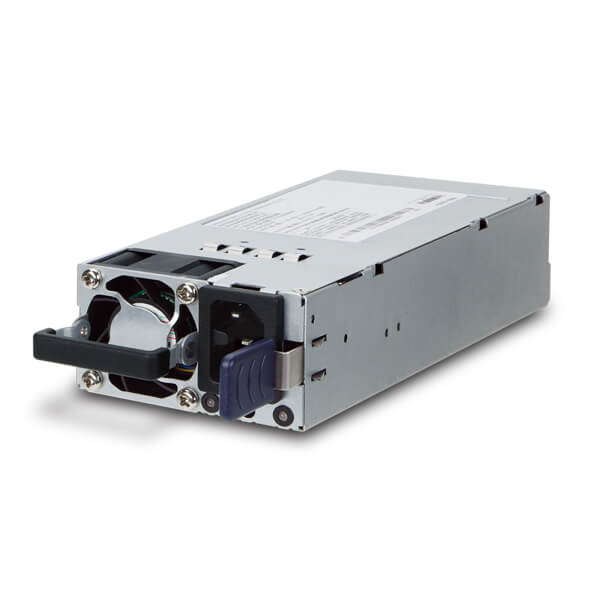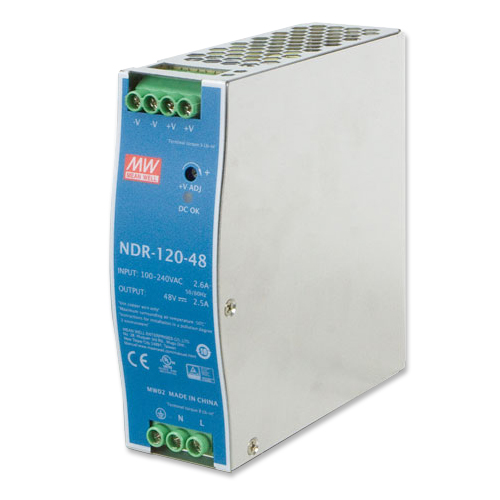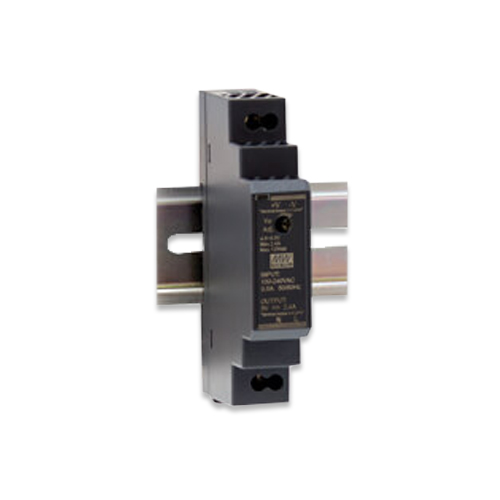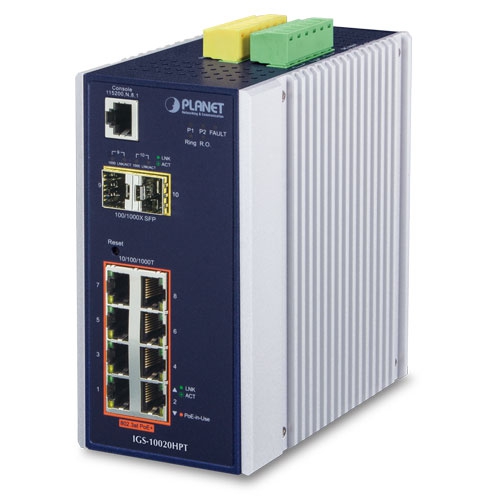Power over Ethernet (PoE) devices allow for the easy transmission of power and data without a loss in data throughput. PoE components include injectors, extenders, and others. The central unit of a PoE network is the switch. Some switches offer a feature that converts fiber optic signals to copper and vice versa. This technology is called a small form-factor pluggable (SFP). This device helps to make different networks compatible and facilitates data transmission between them. This article will cover what an SFP module is, what it does, and how it differs from a media converter.
What Does SFP Mean?
An SFP, or mini-GBIC (gigabit interface converter), is a small transceiver that plugs into the SFP port on a network switch. Manufacturers and networking equipment providers worldwide rely on these devices as an industry standard for three primary reasons:
- Compact size: SFPs allow enterprises to connect networking components in tight spaces to offer fast communication between switches and powered devices (PD).
- Multiple connection options: SFPs are compatible with copper or fiber optic cables.
- Hot-pluggable capabilities: SFPs make it easier to adjust existing networks without redesigning the entire cable infrastructure.
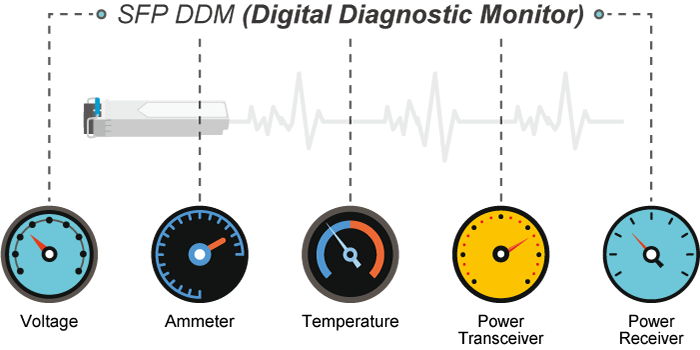
What Does an SFP Module Do?
SFPs plug into specially designed SFP ports and can perform a variety of functions. Primarily, SFP modules facilitate high-speed communication between switches and network components such as routers. Other functions of an SFP module include:
- Transmitting data between copper and fiber optic networks.
- Improving network access in tight areas.
- Providing compatibility between duplex multimode or single-mode fiber optic and simplex cables.
- Offering speeds of up to 10Gbps in the latest versions of SFP, such as SFP+.
- Supporting wavelengths of up to 1310nm for multimode and 1550nm for single mode.
Having the ability to work with both copper and fiber cables locally gives administrators more control over cost, speed, range, and accessibility.
SFP Copper and Fiber Modules
SFP modules working with copper cables are primarily 1000BASE-T and 1000BASE-TX modules. SFP copper bridges communications between PoE switches, typically within 100 meters. Modules that work with fiber optic cables offer many options:
- They can support single-mode and multimode fiber optic cables.
- Will work with simplex and duplex.
- Have wave lengths options ranging from 850nm to 1550nm.
- Support network ranges from 500 meters to over 100 km.
In commercial terms, there are specific abbreviations for each module. For instance, modules can be SX, LX, ZX, and EX. SX indicates a short-range multimode wavelength of 850nm. Others show a single-mode wavelength range of varying capacities.
How to Choose Between SFP Fiber or Copper Modules
SFP modules that work with fiber optic cables are suitable for supporting long-range networks. Since it supports single-mode and SFP multimode modules, users can select the appropriate transceiver according to their required optical network range.
SFP modules with copper cables are ideal for local gigabit Ethernet networking. As long as the range is less than 100 meters, users should not experience any network lags.
SFP Module Compatibility
SFP compatibility is complex because modules have no formal, regulated international standard. Instead, manufacturers design specific products (SFP modules in this case) to be compatible under a multi-source agreement (MSA). An MSA defines the characteristics of a particular system and makes parts from multiple manufacturers interoperable.
Despite the MSA, some insiders feel that SFP modules work best when used with equipment from the same brand. This creates a barrier to lowering costs by making purchases outside of a particular brand a bit of a challenge.
What is an Advanced SFP?
Since the invention of SFP modules, manufacturers have continued to advance the technology. Such advancements include SFP+ and Quad small form-factor pluggable (QSFP). SFP+ has the following elements:
- It’s faster than earlier versions of SFP modules.
- It supports speeds of up to 10Gbps.
- It works across shorter distances.
- It cannot operate slower than 1Gbps.
- SFP+ ports are compatible with SFP optics, but SFP optics aren’t compatible with SFP+ ports.
QSFP modules can support Ethernet, InfiniBand, SONET, and fiber channels.
The main difference between QSFP and SFP modules is the quad form. QSFP can hit speeds of up to 100GBps using four reception and transmission channels. It is an advanced system that requires an enormous bandwidth.
How Does an SFP Module Differ from A Media Converter?
We now know that an SFP is a module that fits in a socket of a PoE switch or Ethernet media converter. Media converters work similarly to SFP modules. A media converter supports copper-to-fiber and fiber-to-copper data transmission. Businesses can use converters to translate and transmit data between two different transmission media types, such as from fiber to copper cables. Here are ways SFP modules differ from a media converter:
- Size: SFP modules differ in size from media converters. These modules are often small and meant for compact spaces, while media converters are large devices that extend network cables.
- Configuration: SFP modules are accessories that businesses can use only on PoE switches or devices with SFP ports. They support hot-pluggable and flexible designs. Media converters have fixed specifications, and users can utilize them independently.
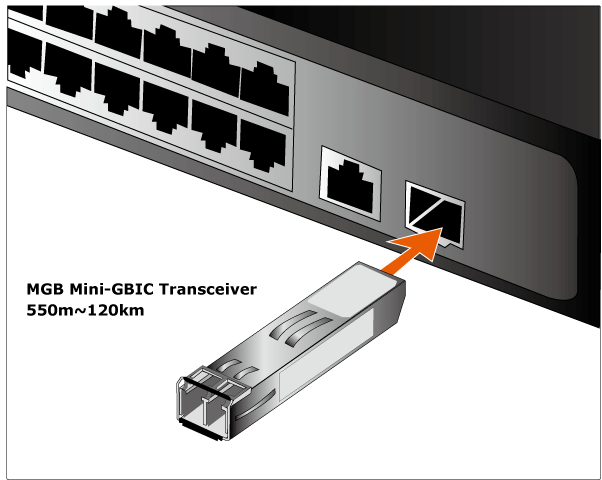
Find an SFP Module at Planet Technology USA
An SFP is a fiber optic module that fits in an SFP socket or port of any Ethernet switch. It makes networks compatible and facilitates fast data transmission. It’s essential for enterprises needing high-speed communication between switches and network components such as routers.
Planet Technology USA is a US-based distributor of Planet Technology Inc. We work closely with Planet Technology in Taiwan to offer the best quality services and products. We offer products such as PoE, networking components, and Ethernet extenders. Contact us today and schedule a free consultation.
